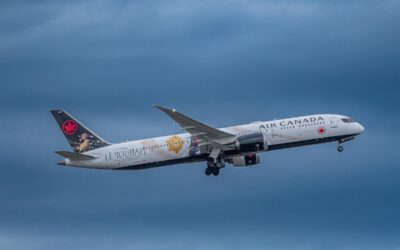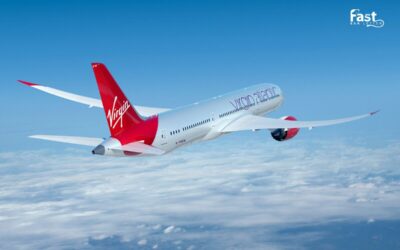Which Airlines Allow Emotional Support Animals in 2025?

Traveling with Emotional Support Animals (ESAs) has become a crucial topic for many passengers, especially with the changes in airline policies. If you’re planning to fly in 2025 and want to ensure your ESA can accompany you, it’s essential to understand which airlines are allowing Emotional Support Animals. This article will provide an in-depth look at current ESA airline policies for 2025 to help you prepare for your next flight.
For example, Air Canada is known for its pet-friendly policies, allowing small pets in the cabin and larger animals in a dedicated cargo area, making it a great option for travelers with pets.

Why Have Airline Policies Changed?
In recent years, several airlines have revised their policies on Emotional Support Animals on planes due to increasing incidents and regulatory changes.
The U.S. Department of Transportation (DOT) updated its guidelines, allowing airlines to categorize Emotional Support Animals as pets rather than service animals based on the airline’s rules. This shift has led to stricter policies, with many airlines no longer accepting ESAs on flights.
However, some airlines still have ESA-friendly policies, particularly for passengers with proper documentation. Let’s explore the current scenario of airlines accepting Emotional Support Animals.Which Airlines Can Allow My Emotional Support Animals?
1. LATAM Airlines
- Service Area: LATAM is the largest air carrier in Latin America, operating international and domestic routes.
- Pet-Friendly Policy: LATAM allows emotional support dogs and cats on specific routes, including flights to/from Colombia and Mexico, and domestic flights within Colombia.
- Cost: ESAs travel free of charge on qualifying routes.
- Animal Requirements: The ESA must weigh no more than 12 kg (26 lbs) and fit comfortably in a carrier that can be stowed under the seat.
- Breed Restrictions: Aggressive or potentially dangerous breeds are prohibited.
- Additional Considerations: An anti-bite muzzle is mandatory for emotional support dogs. Ensure you carry valid ESA documentation and check route-specific policies by contacting the airline in advance.
2. Volaris Airlines
- Service Area: Volaris is a major low-cost Mexican airline with routes across the Americas.
- ESA Policy: Volaris Airlines allows emotional support dogs and cats on domestic flights within Mexico and certain regional routes.
- Cost: ESAs travel free on approved routes.
- Animal Requirements: The ESA must weigh no more than 26 pounds (including the carrier).
- Carrier Requirements: Not required to be in a carrier, but a leash or harness is mandatory.
- Additional Considerations: Behavioral standards apply—disruptive animals may be denied boarding. Check with Volaris ahead of travel for route-specific policies.
3. Aeroméxico
- Service Area: Flag carrier of Mexico with routes throughout the Americas, Caribbean, Europe, and Asia.
- ESA Policy: Aeromexico permits emotional support dogs and cats, with documentation.
- Cost: ESAs travel free of charge on eligible flights.
- Animal Requirements: ESA must weigh no more than 26 pounds and may ride on your lap or in a carrier under the seat.
- Seating Adjustments: You may be asked to change seats if another passenger has allergies.
- Additional Considerations: Always carry a valid ESA letter. Restrictions may vary depending on destination or flight duration.
Which Airlines Accept Emotional Support Animals As Pets?
Most U.S. airlines no longer recognize Emotional Support Animals (ESAs) as service animals, but some airlines do allow ESAs to travel as pets. Due to regulatory changes in the Air Carrier Access Act, only a few airlines now permit emotional support animals in the cabin. Here is the list of pet-friendly airlines.
1. Delta Airlines
- Policy: Delta Airlines does not recognize ESAs as service animals. However, they may travel as in-cabin pets.
- Fees:
- Domestic & Canada Flights: $150 each way.
- International Flights: $200 each way.
- Type of Pet Allowed: Small dogs, cats, and household birds.
- Size/Weight Limits: Delta Airlines states the pet and carrier must fit under the seat in front of you. Soft-sided carrier dimensions: 18 in x 11 in x 11 in (46 cm x 28 cm x 28 cm).
- Additional Notes: Only one pet per passenger. The carrier must be ventilated and leak-proof.
2. American Airlines
- Policy: ESAs are no longer considered service animals and may travel as pets in-cabin or via cargo, depending on size.
- Fees:
- Flights to/from Canada, Mexico, Central America, Caribbean: $125 each way.
- Domestic, Puerto Rico, U.S. Virgin Islands: $125 each way.
- Type of Pet Allowed: Cats and dogs only.
- Size/Weight Limits: Pet and carrier must fit under the seat. Carrier size limit: 19 in x 13 in x 9 in (48 cm x 33 cm x 22 cm). Combined weight must not exceed 20 pounds (9 kg).
- Additional Notes: Pets exceeding in-cabin limits may travel through American Airlines Cargo.
3. United Airlines
- Policy: In United Airlines ESAs may travel as pets under United’s in-cabin pet program.
- Fees: Domestic & International Flights: $125 each way (some destinations may vary)
- Type of Pet Allowed: Dogs and cats
- Size/Weight Limits:
- Soft-sided carrier dimensions: 18 in x 11 in x 11 in (46 cm x 27 cm x 27 cm).
- Hard-sided carrier: 17.5 in x 12 in x 9 in (44 cm x 30 cm x 22 cm).
- Additional Notes: Only one pet per carrier. Restrictions may apply by destination.
4. Southwest Airlines
- Policy: Southwest Airlines allows Emotional Support Animals (ESAs) to travel as pets in the cabin.
- Fees:
- U.S. Mainland: $125 each way
- Between Hawaiian Islands: $35 each way
- Type of Pet Allowed: Small cats and dogs.
- Size/Weight Limits: Carrier must fit under the seat. Max carrier dimensions: 18.5 in x 13.5 in x 9.5 in.
- Additional Notes: Pets must stay in the carrier for the entire flight.
5. Alaska Airlines
- Policy: In Alaska Airlines Small pets are accepted for in-cabin travel with a fee. ESAs must travel as pets.
- Fees: $100–$150 each way (route-dependent)
- Type of Pet Allowed:
- Dogs and cats for tickets booked on/after June 5, 2025.
- Rabbits and birds only if booked before that date and flown by April 4, 2026.
- Size/Weight Limits: Carrier must fit under the seat; size varies by aircraft.
- Additional Considerations: A vet-issued health certificate is often required. Space is limited, so book early. Restrictions apply for cargo travel and certain breeds.
6. JetBlue Airlines
- Policy: In JetBlue Airlines only small dogs and cats are accepted as in-cabin pets. ESAs must travel as pets in an FAA-approved carrier that fits under the seat.
- Fees: $125 each way (domestic & international).
- Type of Pet Allowed: Small cats and dogs.
- Size/Weight Limits: Carrier must not exceed 17 in x 12.5 in x 8.5 in (43 cm x 32 cm x 22 cm).
- Additional Notes: Pets must remain fully inside the carrier at all times while in the airport and during the flight. Large dogs are not accommodated.
7. Frontier Airlines
- Policy: In Frontier Airlines emotional support animals are subject to standard pet policies and allowed only on U.S. domestic flights. International pet travel is not permitted.
- Fees: $99 each way.
- Type of Pet Allowed: Domesticated dogs, cats, rabbits, guinea pigs, hamsters, and small household birds (U.S. flights only).
- Size/Weight Limits:
- Hard-sided carrier: Max 18″ L x 14″ W x 8″ H
- Soft-sided carrier (recommended): Max 18″ L x 14″ W x 11″ H
- Additional Notes: The Carrier must fit under the seat. Only one adult dog or cat per container.
8. Spirit Airlines
- Policy: Spirit Airlines treats Emotional Support Animals (ESAs) as pets; they are subject to the airline’s standard in-cabin pet policies.
- Fees: $125 each way.
- Type of Pet Allowed:
- Small domestic dogs
- Domestic cats
- Small household birds (not allowed to/from Puerto Rico or the U.S. Virgin Islands)
- Small domestic rabbits (not allowed to/from Puerto Rico or the U.S. Virgin Islands)
- Size/Weight Limits: Carrier must not exceed 18″ x 14″ x 9″ and must fit under the seat.
- Additional Notes: Pets must remain inside the carrier at all times during travel. Exotic animals (e.g., snakes, rodents, spiders) are not accepted. A maximum of two pets per container is allowed, but only one container per guest.
9. Hawaiian Airlines
- Policy: Hawaiian Airlines treats ESAs as pets and only accepts them under standard pet rules.
- Fees: $35 inter-island; $125 North America–Hawaii
- Type of Pet Allowed: Dogs, cats (cabin); household birds (checked baggage only within Hawaii)
- Carrier Requirements: Soft-sided, leak-proof, max 17 × 11 × 9.5 in, under-seat.
- Restrictions: One adult dog/cat (or two puppies/kittens/birds).
- Documentation & Quarantine: Health certificate required, quarantine possible on arrival
Which Dog Breeds Are Not Allowed to Fly in 2025?
Most U.S. airlines no longer ban specific dog breeds outright, especially for in-cabin pet travel. Instead, restrictions typically focus on two key factors: health risks and behavioral concerns.
Snub-nosed (brachycephalic) breeds, such as French Bulldogs, Boxers, and Brussels Griffons, are often prohibited from traveling in the cargo hold due to increased risks of respiratory distress at high altitudes. Airlines like Delta and Alaska enforce this policy to ensure animal safety.
For pets traveling in the cabin, most airlines will allow any breed that fits the carrier size requirements and demonstrates calm, non-disruptive behavior. Dogs that bark excessively, growl, lunge, or pose a threat may be denied boarding regardless of their breed.
To avoid surprises at the airport, always review your airline’s most recent pet travel policy at least 48 hours before departure. This helps ensure your pet meets all breed, behavior, size, and documentation requirements for safe and stress-free travel.
What to Consider When Flying With Your ESA in 2025

How to Book a Flight With an ESA in 2025?
When flying with an emotional support animal, always inform the airline in advance. Many carriers limit the number of pets allowed in the cabin per flight.
Steps to take:
- Notify the airline during booking or at least 48 hours before departure.
- Check if your ESA meets the airline’s size, breed, and behavior criteria.
- Reserve a spot early to ensure your animal companion is approved.
Required ESA Travel Documents in 2025
- A valid ESA letter (dated within the last 12 months)
- Vaccination records
- Animal health certificate
- Rabies vaccination proof
- Behavioral declaration or attestation (if required by the airline)
Pro Tip: Your ESA letter must come from a licensed mental health professional and clearly state the need for an emotional support animal. Make sure it includes the provider’s name, license number, and contact details.
ESA Behavior Rules During Air Travel
Most airlines will only allow well-behaved animals in the cabin. Emotional support animals must remain calm and non-aggressive throughout the trip.
Common behavior expectations:
- No barking, growling, lunging, or disruptive behavior
- Must stay inside the carrier or leashed at all times
- Cannot obstruct aisles or other passengers’ space
Animals that display signs of aggression or excessive anxiety may be denied boarding—even if you have a valid ESA letter.
ESA Travel Health and Comfort Tips
To ensure your ESA is fit to fly:
- Visit your vet before the trip for a pre-travel health check.
- Avoid feeding your pet just before the flight to reduce motion sickness.
- Acclimate your ESA to confined spaces by practicing with the carrier at home.
- Bring familiar items like a blanket or toy to reduce stress during the journey.
Know the Airline ESA Pet Policy Before Booking
Because most U.S. airlines no longer recognize ESAs as service animals, they are now treated under standard pet policies. These vary by carrier, so research is essential.
Key things to check:
- Cabin pet fees (usually $95–$150 each way)
- Carrier size and weight limits
- Approved routes and breed restrictions
- Policies for international ESA travel, which may differ
Note: Unlike psychiatric service dogs, ESAs are not legally guaranteed access to the cabin under the Air Carrier Access Act. They must comply with the same rules as pets.
How to Prepare Your ESA for a Flight?
Help your ESA adjust to flying with these tips:
- Practice short stays inside the airline-approved carrier
- Take short car rides to simulate the motion of a plane
- Use calming aids (consult a vet) if your animal is prone to anxiety
- Label the carrier with your contact information in case of emergencies
Respect Cabin Rules While Traveling With an ESA
- Keep your ESA leashed or inside the carrier at all times.
- Do not allow them on the seat or into neighboring foot space.
- Clean up after your animal and carry absorbent pads or wipes.
Final Travel Checklist
- Confirm airline ESA policies.
- Update your ESA letter and vet documents.
- Ensure your pet fits in the approved carrier.
- Arrive early for extra screening or paperwork.
- Pack calming aids, food, and ID tags.
Conclusion
Frequently Asked Questions (FAQs)
Can I Still Bring My Emotional Support Animal On a Plane in 2025?
What Documentation Do I Need To Fly With My Emotional Support Animal in 2025?
- An ESA letter from a licensed mental health professional (dated within the past year)
- Up-to-date vaccination records
- A health certificate from a vet
Can I Bring Multiple Emotional Support Animals On a Plane?
Most airlines limit one pet per passenger in the cabin. A second ESA may require cargo booking or a travel companion. Always check your airline’s specific rules.
What’s the Difference Between a Service Dog and an ESA?
What Are My Options if My Airline Doesn’t Allow ESAs?
Do Airlines Require Advance Notice To Travel With An Emotional Support Animal?
Are Emotional Support Animals Allowed on International Flights?
Do Airlines Charge For Emotional Support Animals?
What Are The ESA Flight Rules in 2025?
- Book them in advance
- Use an under-seat carrier
- Pay applicable pet fees
- Submit proper documents
Can ESA Dogs Fly in The Cabin?
Can A Psychiatric Service Dog Fly With Me On American Airlines?
Do Airlines Flying to South America Accept ESAs?
What’s The Difference Between Psychiatric Service Dogs And Assistance Animals?
How Do I Fly With a Psychiatric Service Dog on American, Delta, or Alaska?
- Documentation from a licensed professional
- A behavior attestation form
- Pre-flight notification (often 48 hours)
Can a Psychiatric Service Dog Fly for Free?
Can My Animal Companion Be Considered a Service Animal for Mental Health Reasons?
Can Miniature Horses Fly as Service Animals?
Are Psychiatric Service Dogs Allowed on Planes?
Post Author
Prince Sharma
Related Articles
Air Canada Psychiatric Service Dog and Emotional Support Animal Policy Guide
Air Canada Psychiatric Service Dog and Emotional Support Animal Policy GuideAir Canada permits both emotional support animals and service dogs onboard. You must register your psychiatric service dog (PSD) at least 8 hours before departure and your...
Westjet Airlines Psychiatric Service Dog and Emotional Support Animal Policy Guide
WestJet Airlines Psychiatric Service Dog Policy and Emotional Support Animal Guidelines WestJet no longer accepts emotional support animals (ESAs) as service animals; they are now treated as pets, subject to standard pet fees and carrier...
Virgin Atlantic Airlines Emotional Support Animal and Psychiatric Service Dog Policy Guide
Virgin Atlantic Airlines Psychiatric Service Dog And Emotional Support Animal Policy Guide Virgin Atlantic permits both psychiatric service dogs (PSDs) and emotional support animals (ESAs) to travel in the cabin, provided they meet specific...
Live Free with Your ESA!
An ESA Letter Unlocks Freedom!






